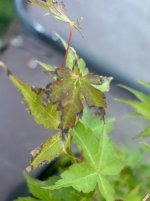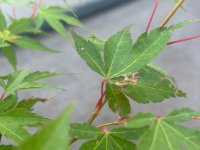Hey thanks for the reply and info!
I thought CDA would have much colder winter temps, but after looking it up it seems nearly identical, with us maybe even being a few degrees colder.
On your second point, what if they are in the ground and you can't move them in? If I throw this thing in the ground soon is stacking mulch around the base going to cut it for sub 20F weather? I was also planning on making a small lean-to out of plywood to keep the snow off of it. Maybe I'm better off putting it in a bigger pot and just moving it into the garage at night when it gets below freezing?
If I keep it potted and it freezes solid, do I just let it stay that way without watering if it doesn't thaw during the day?
Interesting, I would have thought CDA was colder than Boise (I'm not too far from CDA) but the lower elevation at CDA must equalize it in terms of cold temps.
I don't keep the few JM bonsai that I do have in the ground overwinter for that very reason - once frozen in the ground, you can't move them and have less control. Rodent damage is also a possibility. That being said, if you heel them into the ground, mulch, and then get a nice covering of snow of at least a few inches - your tree roots should be insolated enough and stay above that critical 15 deg F threshold, even if air temps drop to 0 deg F (I'm not sure about -15 deg F, but I think with all that protection, especially the snow, they'd be fine). I do use snow as a insolator for my other really hardy trees (larch/spruce/thuja), which stay outside most of the winter (except for severe cold snaps and without insolating snow cover, then I move them too).
What you really need to look out for is severe drops in temperature in the late fall (say lows have maybe been around freezing, and then they plummet down to 20 deg F over just a day or two) those are tree killers. It's best for trees to cool down gradually.
Regarding frozen soil and watering: Yep, when my JMs are living in that 20-32 deg F zone, I don't water. I'll stack snow on top of the soil, so that if it does start to thaw and we get some melting, they get some water.
In a nutshell, I try to keep my JMs between 20-40 deg F all winter (but I stay far away from that 20 deg F mark, so maybe more like 23-40 deg F). And I water them infrequently (every 2-4 weeks, often by just piling snow on top of the pot).




